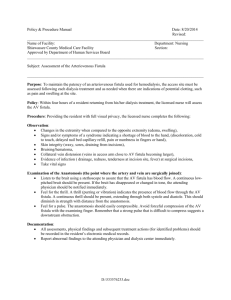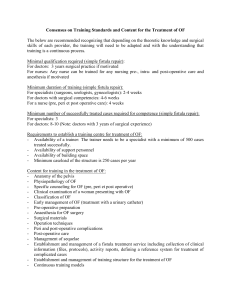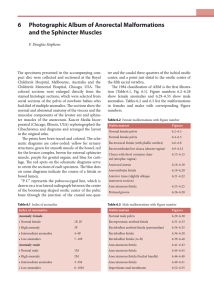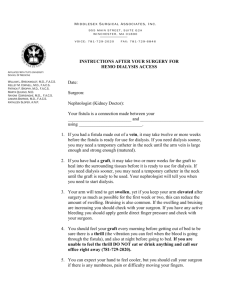Marija Lipar, et al. Oronasal Fistula in Dogs. J Vet Sci Res 2016, 1(2
advertisement
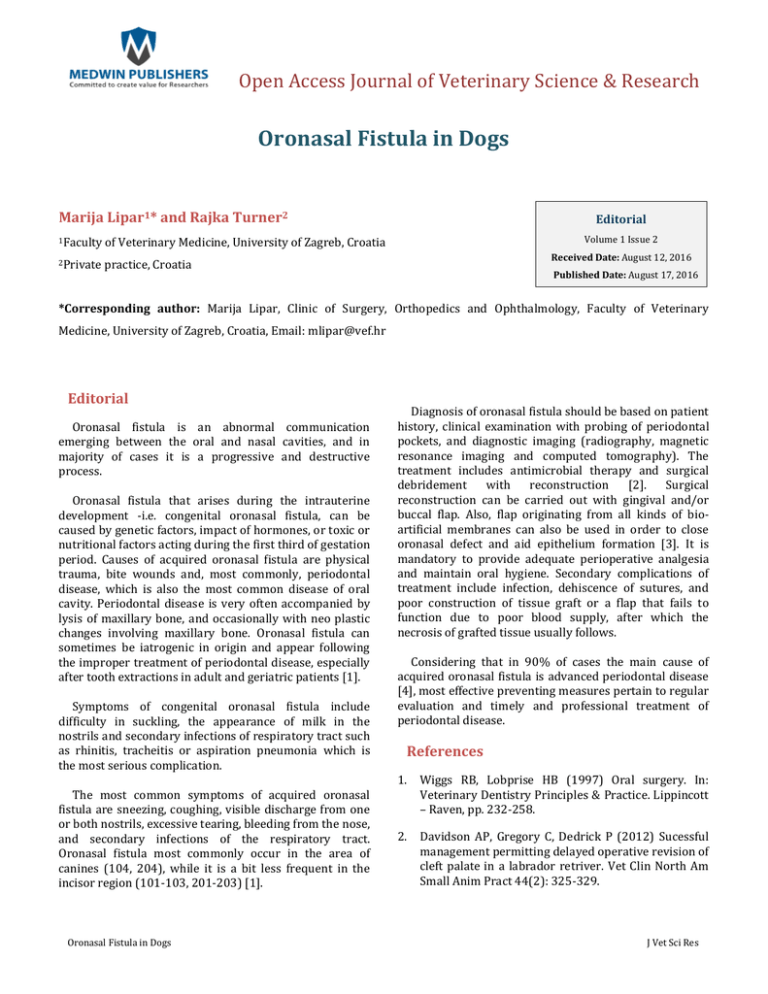
Open Access Journal of Veterinary Science & Research Oronasal Fistula in Dogs Marija Lipar1* and Rajka Turner2 1Faculty 2Private Editorial Volume 1 Issue 2 of Veterinary Medicine, University of Zagreb, Croatia Received Date: August 12, 2016 practice, Croatia Published Date: August 17, 2016 *Corresponding author: Marija Lipar, Clinic of Surgery, Orthopedics and Ophthalmology, Faculty of Veterinary Medicine, University of Zagreb, Croatia, Email: mlipar@vef.hr Editorial Oronasal fistula is an abnormal communication emerging between the oral and nasal cavities, and in majority of cases it is a progressive and destructive process. Oronasal fistula that arises during the intrauterine development -i.e. congenital oronasal fistula, can be caused by genetic factors, impact of hormones, or toxic or nutritional factors acting during the first third of gestation period. Causes of acquired oronasal fistula are physical trauma, bite wounds and, most commonly, periodontal disease, which is also the most common disease of oral cavity. Periodontal disease is very often accompanied by lysis of maxillary bone, and occasionally with neo plastic changes involving maxillary bone. Oronasal fistula can sometimes be iatrogenic in origin and appear following the improper treatment of periodontal disease, especially after tooth extractions in adult and geriatric patients [1]. Symptoms of congenital oronasal fistula include difficulty in suckling, the appearance of milk in the nostrils and secondary infections of respiratory tract such as rhinitis, tracheitis or aspiration pneumonia which is the most serious complication. The most common symptoms of acquired oronasal fistula are sneezing, coughing, visible discharge from one or both nostrils, excessive tearing, bleeding from the nose, and secondary infections of the respiratory tract. Oronasal fistula most commonly occur in the area of canines (104, 204), while it is a bit less frequent in the incisor region (101-103, 201-203) [1]. Oronasal Fistula in Dogs Diagnosis of oronasal fistula should be based on patient history, clinical examination with probing of periodontal pockets, and diagnostic imaging (radiography, magnetic resonance imaging and computed tomography). The treatment includes antimicrobial therapy and surgical debridement with reconstruction [2]. Surgical reconstruction can be carried out with gingival and/or buccal flap. Also, flap originating from all kinds of bioartificial membranes can also be used in order to close oronasal defect and aid epithelium formation [3]. It is mandatory to provide adequate perioperative analgesia and maintain oral hygiene. Secondary complications of treatment include infection, dehiscence of sutures, and poor construction of tissue graft or a flap that fails to function due to poor blood supply, after which the necrosis of grafted tissue usually follows. Considering that in 90% of cases the main cause of acquired oronasal fistula is advanced periodontal disease [4], most effective preventing measures pertain to regular evaluation and timely and professional treatment of periodontal disease. References 1. Wiggs RB, Lobprise HB (1997) Oral surgery. In: Veterinary Dentistry Principles & Practice. Lippincott – Raven, pp. 232-258. 2. Davidson AP, Gregory C, Dedrick P (2012) Sucessful management permitting delayed operative revision of cleft palate in a labrador retriver. Vet Clin North Am Small Anim Pract 44(2): 325-329. J Vet Sci Res 2 Open Access Journal of Veterinary Science & Research 3. Lorrain RP, Legendre Lf (2012) Oronasal fistula repair using auricular cartilage. J Vet Dent 29(3): 172175. Marija Lipar, et al. Oronasal Fistula in Dogs. J Vet Sci Res 2016, 1(2): 000108. 4. Clinical records, Clinic for Surgery, Orthopedics and Ophthalmology, University of Zagreb, 2012. Copyright© Marija Lipar, et al.
